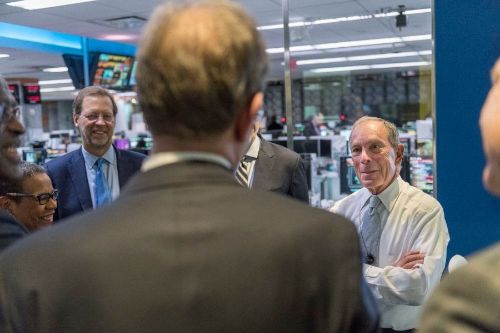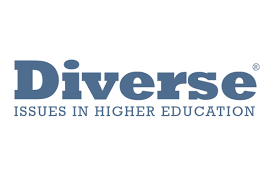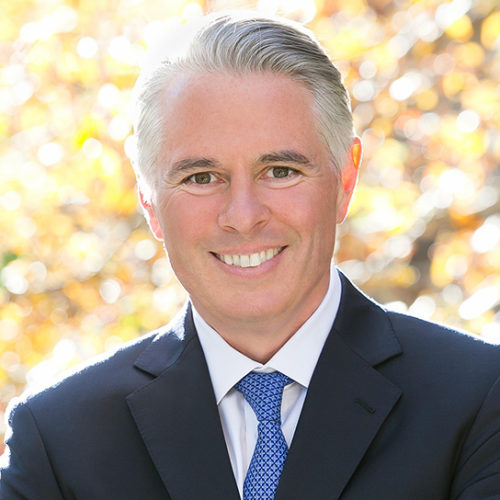
Quarterly Newsletter
Welcome to The American Talent Initiative quarterly newsletter – your source for news and insights on how we’re working toward our 50,000-by-2025 goal.
Presidential Perspective: David A. Greene, Colby College

Over the last few years, Colby College has made a concerted effort to diversify its student body. From 2015 to 2018, Colby more than doubled the number of Pell-eligible students in the incoming class and has launched targeted financial aid programs to ensure that access to a Colby education includes low- and middle-income families. We sat down with President David A. Greene, who shared how Colby is making this transformation possible.
"The question for us was: How do you send a very clear message to families that a Colby education can be available to them? … The Colby Commitment and the Fair Shot Fund allow about 87 percent of families in the country—the vast majority—to consider Colby an option.”
– David A. Greene, Colby College.
Q: Why did you personally want to be involved in the American Talent Initiative?
A: The American Talent Initiative has brought together the country’s top universities and colleges all committed toward a common goal. Although, as a whole, higher education institutions are a collaborative and collegial network of organizations, we also compete with one another, so finding areas where we all have a shared interest in making substantial progress is critical. ATI has identified one of those areas, and it’s allowing us to leverage our shared efforts to do something that is of great importance to our institutions and the country.
Q: What were the biggest challenges facing Colby in reaching and enrolling more low- and moderate-income students?
A: Colby is not immune to the fundamental issues facing the nation’s top liberal arts colleges. One is that we’re seen as expensive, so affordability is critical. And for many lower- and moderate-income families, a focus on applied learning and access to the first job has become the calling card for a set of fields like engineering, for example, that are not the backbone of liberal arts colleges. Understanding the purpose and mission of a liberal arts college and the extraordinary opportunities provided by this type of education may be challenging for families who are unfamiliar with the liberal arts. I think those two things—affordability and communicating the mission and opportunities afforded at a liberal arts college—present a challenge in reaching families who may be lower-income or who may not have had experiences at places like Colby.
Q: A concern from ATI members and the public is that middle-income students could be squeezed out as institutions expand access for low-income students. Colby has two initiatives that specifically address affordability for both low- and middle-income students—one that provides zero family contribution for families who make less than $60,000 a year, and another that guarantees families who make less than $150,000 will pay no more than $15,000 annually.
Tell us about the thinking that went into the design of these incentives.
A: The question for us was: How do you send a very clear message to families that a Colby education can be available to them? Financial aid policies are often opaque, and it can be difficult to tell how decisions are made. And there’s no doubt that what we do is expensive. The kind of education we provide is faculty-intensive and requires extraordinary resources for undergraduate students. It’s a living learning community with an expansive infrastructure, and all these things are expensive to deliver. My goal is to always be disciplined on the expense side but to appreciate an extraordinary education is expensive to provide while focusing on the affordability issue. We had to send the signal to all families that our doors are open to their children if they are talented, driven, will make the most of a Colby education, and will contribute to the community. We want them here.
The first program we designed to show families they really can afford a Colby education is the Colby Commitment program, which, among other things, makes it possible for families with a household income of $60,000, the median in the U.S., or less to send their child to Colby with no parent or guardian contribution. And we package all financial aid with grants and no loans. This sends an important message to lower-income families, as loans can be a very significant impediment to college choice.
So through the Colby Commitment, about half of the parents in this country will not have to worry themselves about providing a contribution. The other program is called the Fair Shot Fund, which is intended to help middle-income families more broadly—families who feel squeezed out of higher education right now and might think they can’t send their children to schools like Colby. We again considered how to simplify the financial aid process so people would understand it clearly and see that Colby is within their reach. The program has a sliding scale from $60,000 to $150,000. At the top end of that, for those with a family income of $150,000, the expected annual contribution from parents or guardians will be no more than $15,000 a year. Colby’s comprehensive fee is currently about $70,000 a year, so that’s a very significant discount. This makes us less expensive to families than state universities, where the total fees average around $22,000 to $23,000 a year. If Colby is the right place for a student from a middle-income family, it will also be one of the most affordable colleges, and certainly one of the most affordable top colleges, in the country for them.
The Colby Commitment and the Fair Shot Fund allow about 87 percent of families in the country—the vast majority—to consider Colby an option.
Q: These are ambitious financial aid policies. What went into making them possible?
A: A combination of things made these programs possible—primarily philanthropy and institutional commitment.
The Fair Shot Fund came out of an incredible financial commitment following conversations I had with a Colby alumnus. His grandfather immigrated to the United States and worked in a quarry so he could send his children on to top colleges and universities. Then those children had extraordinary opportunities because of the education he provided, and their children have done well, too. We wanted to make sure that all families who are hard-working and trying to do their best in this country also have the opportunity for a great education. How do we keep the American Dream alive for these families?
Having a great gift to start off is important, but the second piece, which is equally important, is having an institutional commitment to getting this work done. That means allocating our own resources toward financial aid. There are many colleges and universities that can do these kinds of things if they make the commitment. It’s fundamentally about whether or not it’s a priority. We wanted to make sure that access and affordability would be a priority for Colby and that we would allocate our resources as well as raise money necessary. One way or another, we were going to get it done since we felt it was so essential to our mission, who we are as an institution, and what our broader place in the world is all about.
Q: It’s still early, but do you have a sense of the impact these policies are having on recruitment and enrollment of low- and moderate-income students?
A: It is early, but there are a few telling statistics. When I came to Colby in 2014, we had 5,000 applications for admission. This year we have 13,584 applications. The vast majority of those students would need significant financial aid to attend. We’ve been able to reach students we hadn’t been able to reach before—both geographically and demographically—which is important to us. The growth and diversity in our applicant pool along all different measures has increased significantly over that time.There are other indicators, too, like our Early Decision pool. Early decision typically attracts students from highly resourced families, but this year, more than 20 percent of the students accepted Early Decision were Pell-eligible.
I’d contrast this to a handful of years ago, when 9 percent of the entire student body at Colby was Pell-eligible. That’s climbing up very significantly. Last year 14 percent of the incoming class was Pell-eligible. Also, in the Early Decision cohort, we’re now at more than 30 percent students of color, which is a real high point for Colby. We’re seeing this demographic diversity shift in our pool because of the work we’re doing, and it’s been so encouraging. And on every measure we look at for academic quality, these students are the most prepared and qualified we’ve ever seen. I think for institutions that are committed to diversity and excellence—and the two things are completely intertwined in my view—having the right financial aid programs and the right messaging around them is a critical component of making that objective a reality.

Q: Part of ATI’s theory of change is that members can benefit from learning from each other about what works and what doesn’t. What lessons have you learned from creating these policies that might benefit your fellow ATI presidents—especially those at smaller private institutions like Colby?
A: I think for all of us, it’s about ensuring that access is an absolute institutional priority.
There are many different calls on the resources of our colleges and universities, and we make decisions every day about those. When we determine something is a high priority we always find a way to make it happen.
I think, for all of us, seeing this as a critical component of higher education is so essential. There are lots of creative ways that institutions can make progress. We’ve found ways that will work for us, others will find their own ways, but it all begins with setting it as an absolute top priority for institutions.
Q: What do you see as ATI’s potential impact on higher education more broadly?
A: ATI encourages the nation’s leading institutions to focus on access as a top priority. The second thing it will do is, by doing the first, it can actually help to change the opportunities we provide, the demographics of our institutions, and ultimately change leadership throughout this country. These are institutions that have long been educating leaders in various fields, and if we are to be able to do that in a way that focuses on diversity and access, we can give all people a chance no matter their background or financial means and allow them to have the very best opportunities in life. That to me is one of the most fundamental things that higher education can do, and ATI is helping to push us all in that direction in a way that will have a major impact not just on our institutions but on the country as a whole.
Presidential Summit Recap
“I want to thank all of you for your commitment to the American Talent Initiative. It is because of you and your teams that top colleges are more available to more students, and that is going to change their lives, and it’s also going to make our country better.”—Michael R. Bloomberg
80 presidents, chancellors, and provosts convened in New York City on February 5, 2019 for ATI’s third annual Presidential Summit. Guests speakers included Dick Chait & Carol Folt, John King & David Brooks, and business leaders from Citi and Bloomberg LP.
Beyond Pell: The American Talent Initiative’s Approach
Emily Schwartz, Elizabeth Davidson Pisacreta
In January, economists Caroline Hoxby and Sarah Turner published a study cautioning that efforts to increase enrollment of low-income students at selective colleges could backfire. They posit that using national measures (like Pell or quintile rankings) to evaluate institutional enrollment of low-income students does not fully account for circumstances that vary by state, including the qualifications, preparation, and income levels of states’ high school graduates. In addition, the authors argue that by focusing on increasing Pell enrollment alone, institutions may be incentivized to change their enrollment practices in ways that disadvantage students right above the Pell eligibility cutoff. Hoxby and Turner raise important points that have been the subject of on-going discussion amongst ATI staff, steering committee members, and institutional representatives, including ATI presidents.
ATI uses students’ receipt of Pell to measure our collective progress toward the 50,000-by-2025 goal because it is currently the best publicly-available measure that is comparable across all institutions, allowing ATI to track progress among members and institutions that are eligible for ATI but not currently members. Members have indicated that they find the Pell designation valuable to guide their participation in ATI, and many have set goals for enrolling Pell students, understanding that they are underrepresented at many high-graduation-rate institutions.
However, Pell is not the only measure being used by members in connection to ATI. Many ATI members have set goals related to increasing enrollment, success, and financial aid for non-Pell, moderate-income students; first-generation students; and other underrepresented students. This reflects an understanding among members that, while Pell approximates the bottom half of the income distribution, they can benefit by considering the implications of their enrollment management strategy on the fuller income distribution.1
ATI staff regularly evaluate our approach to this issue, and over the past year have devised multiple strategies for exploring enrollment changes beyond Pell. These strategies include:
- Collecting data on the detailed income distribution: Each year, members are encouraged to submit detailed data on the full income distribution of their enrolled students. In 2018, 55 percent of members that submitted data elected to participate in this voluntary collection.
- Setting and reporting on goals that go beyond Pell: Through the Collective Impact Framework, members are encouraged to set enrollment, financial aid, and graduation rate goals for moderate and/or middle-income students, defining income cutoffs in ways that align with institutional and state circumstances.
- Facilitating strategic collaborations: ATI is facilitating a collaboration with the CLIMB initiative, which uses tax data from the IRS to help interested members better understand the full income distribution of their students and how those students fare in terms of post-graduation earnings. Learn more about this collaboration by reviewing our May 2018 webinar (deck and recording).
- Strengthening practice-sharing: ATI staff have already facilitated a few conversations related to defining “moderate-income,” and are eager to connect members interested in continuing the conversation or learning more. To learn more about past conversations, please review the March 2018 webinar (deck and recording) on this topic.
- Robust data analyses: In the coming months, ATI staff will continue to explore the member-submitted data to better understand the relationship between Pell increases and changes in the composition of enrolled students. We look forward to sharing more.
- If you have any questions or comments about ATI’s approach or strategies in this area, please reach out to Emily Schwartz.
1. The detailed income distribution data collected from ATI members in 2018 indicated that there is substantial overlap between Pell and the bottom three income categories (incomes $0-$75,000) for students who attend ATI institutions.
ATI Releases Case-Making Slide Deck to Support Community College Transfer
Benjamin Fresquez & Tania LaViolet
Every year, 50,000 high-achieving, low- and moderate-income students graduating from community college—15,000 of whom have a 3.7 GPA or higher—do not go on to pursue a bachelor’s degree. These numbers point to a substantial opportunity for ATI institutions to reach thousands more talented students from diverse backgrounds. If every ATI school enrolled an additional 20 low- and moderate-income community college transfers as juniors each year, ATI would be a quarter of the way to its 50,000-by-2025 goal—halfway if each enrolled an additional 40 transfer students.
ATI is also launching its community college transfer community of practice for all interested members, whether they are longstanding transfer champions or relatively new to developing robust transfer partnerships. By joining this community, members will have the opportunity to engage with experts, consider the latest research, and exchange ideas and experiences about how to support a thriving transfer community across both large and small campuses.
To support this community of practice, ATI has developed a slide deck using data gathered for—and the practice framework contained in—the Talent Blind Spot. The slides are customizable for institutions to use internally or externally to help make a strong case for transfer with data and to map out community college transfer strategies over the near- and long-term.
“If every ATI school enrolled an additional 20 low- and moderate-income community college transfers as juniors each year, ATI would be a quarter of the way to its 50,000-by-2025 goal—halfway if each enrolled an additional 40 transfer students.”
The American Talent Initiative in the News:
[su_row][su_column size="1/2"] 
With Bloomberg’s backing, top colleges seek more low-income students
NEW YORK — Leaders of more than 100 selective colleges and universities met here this week at the offices of billionaire Michael R. Bloomberg to strategize on how to recruit and graduate more students from the lowest rungs of the economic ladder…
Read more from The Washington Post.
[/su_column][su_column size="1/2"] 
American Talent Initiative Makes Strides in Improving Opportunities for Lower-Income Students
A nationwide alliance of high-graduation-rate colleges and universities has made significant progress in improving opportunities for low- and moderate-income students, according to a new report by the American Talent Initiative (ATI)...
Read more from Diverse Issues in Higher Education.
[/su_column][/su_row]
Looking Ahead: Key Dates
ATI Data Collection
April-June 2019
Our 2019 ATI data collection period will launch on April 22. A webinar for IR points will be held on April 24—registration is available at this link. For any questions in advance, please email Emily Schwartz.
Summer Institute: Equity in the Academic Experience
Hosted by Georgetown University and the University of Texas at Austin
June 24-29, 2019 – Washington, D.C.
Please find more information here and email Emily with any questions. Registration closes on April 30.
ATI 2019 Strategic Support Meeting
June 17 and 18, 2019 – Washington, D.C.
If you have not already done so, please register here. Please contact Ben and McKenzie with any questions.
Please let us know if you have any questions regarding upcoming dates, or if you would like to RSVP.
The American Talent Initiative
Author
-

The American Talent Initiative (ATI) is a Bloomberg Philanthropies-supported collaboration between the Aspen Institute's College Excellence Program, Ithaka S+R, and a growing alliance of colleges and universities dedicated to substantially expanding opportunity and access for low- and moderate-income students. ATI members—all graduating at least 70 percent of their students within six years—have joined together to address this challenge.
View all posts






